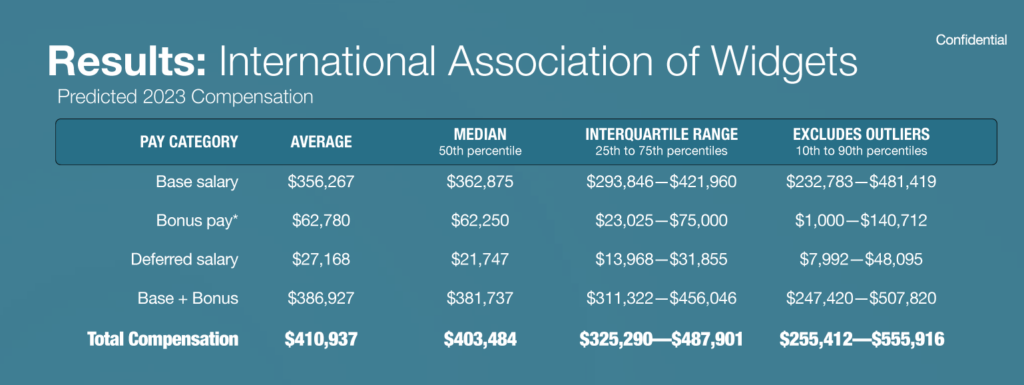Key Roles of Association Boards

1. Set direction.
Good boards know they are ultimately responsible for the association’s mission. One of the most important ways your board can advance the mission is by using it as a core driver to set the association’s direction and determine priorities. Although your board must govern to meet today’s challenges, it must also help your association remain relevant to tomorrow’s world. If your board fails to respond to and instigate change when conditions warrant, it is less likely to make timely, constructive decisions that protect the association’s viability and future performance.
Better boards, in concert with their management teams, protect their associations’ long-term prospects by:
- Regularly reviewing the mission to ensure that it continues to serve as a guidepost for everything the association does.
- Establishing strategic goals, identifying strategic priorities, and contributing to critical strategies to achieve those goals.
- Planning for the future, not by attempting to predict it but by positioning the association to be ready for whatever the future brings. As your association faces internal and external changes, your board should monitor its surrounding market, track progress toward key goals, and assess the results of efforts to attain them.
- Organizing the board’s structure and agenda to conduct its business in light of the association’s strategic priorities.
2. Ensure and protect resources.
One of the ways good boards fulfill their fiduciary role is by ensuring that their organizations secure and conserve adequate financial resources. In associations, major sources of revenue include membership dues, fees for programs and services, and investment income.
In addition, boards carry out their fiduciary role by protecting three other critical assets: human resources (e.g., staff, volunteers, and members), physical assets, and the reputation and image of the association.
“Sustainability encompasses both financial sustainability (the ability to generate resources to meet the needs of the present without compromising the future) and programmatic sustainability (the ability to develop, mature, and cycle out programs to be responsive to constituencies over time).”
Nonprofit Sustainability: Making Strategic Decision for Financial Viability by Jeanne Bell, Jan Masaoka, and Steve Zimmerman (Jossey-Bass, 2010)
Better boards, with support from the management team, protect resources in a number of important ways, including by
- Ensuring that the association’s current revenue sources are stable in the near term and sustainable for the long term.
- Making certain that income is managed properly and financial statements are accurate, intelligible, and timely so that they reflect key financial transactions and the association’s true financial condition.
- •Taking the time to learn the key financial drivers that generate resources, productivity, and program quality. Ensuring that human resources and risk management policies and practices are in place to protect the well-being, safety, and development of staff, volunteers, members, and other key stakeholders.
- Following ethical norms, protecting the association from legal action, and safeguarding the association’s integrity and brand.
3. Engage in outreach.
Good boards serve as bridges between the association and its members. Because they’re usually members of the association, board members tend to be well equipped to fulfill this relationship-builder role with multiple stakeholders. In some associations, boards are also expected to engage in advocacy work to help shape public policy that advances the profession or industry.
Better boards, in concert with their management teams, fulfill their outreach role by
- Deploying board members as ambassadors who communicate the association’s mission and activities to its different constituencies.
- Understanding, interpreting, and communicating the diverse needs and perspectives of the association’s members in a manner that will inform the board’s decisions.
- Defining the association’s position on public policies and serving as advocates when asked to do so.
- Serving as buffers (and even “loving internal critics” when appropriate) to protect the association from intrusions from special interests, regulatory initiatives, or unethical behavior that violate the association’s mission or values.
4. Provide oversight.
“Exceptional boards govern in constructive partnership with the chief executive, recognizing that the effectiveness of the board and chief executive are interdependent.”
The Source: Twelve Principles of Governance That Power Exceptional Boards (BoardSource, 2005)
Good boards oversee the assets that have the greatest impact on the association’s health and well-being—including the chief staff officer. The board depends, in part, on the chief staff officer (and his or her staff) to provide the information the board needs to govern well; the chief staff officer depends on the board for the authority to lead and manage the association on a day-to-day basis. Problems can arise when these respective roles are unclear, when there are too many overlapping areas in which more than one party has authority, or when individual board members attempt to direct the staff. It all works best when the chief elected officer and chief staff officer understand their shared and distinctive responsibilities to lead and educate the board and are committed to each other’s success.
One of the most critical ways in which a board fulfills its oversight role is by selecting and supporting the chief staff officer and then reviewing his or her performance. This board role is advanced by providing regular feedback and a leadership climate in which the chief staff officer can succeed. Boards cannot govern well without the chief staff officer’s collaboration, and the chief staff officer is less likely to lead effectively without the unflagging support of the board. By doing these things well, your board can truly hold the chief staff officer accountable. But in case the association ever has to replace a chief staff officer unexpectedly, your board should be sure to have emergency leadership-transition plans in place.
Better boards monitor the association’s performance and progress against established goals and priorities as well as critical drivers of change. These boards:
- Focus on what’s most important to watch, rather than trying to examine everything.
- Ensure that policies and diagnostic tools are in place to regularly evaluate the association’s infrastructure, programs, and services to determine if they advance the mission and serve the association’s constituencies.
- Establish nominations and election practices that attract the best and the brightest to board service.
- Provide thorough orientation for new board members and ongoing education for all board members.
- Regularly assess the board’s own performance for the purpose of learning and improving.
This is an excerpt from The Governing Board: Key Responsibilities for Association Boards and Board Members by Nancy R. Axelrod.




